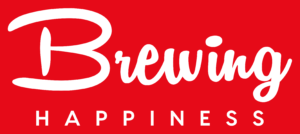In today’s highly competitive digital landscape, local businesses need every advantage to stand out and reach their ideal customers. One of the most powerful tools for achieving this is white-label Facebook ads. These ads, designed by third-party agencies or providers, allow businesses to focus on their marketing without worrying about the technicalities.
When combined with advanced targeting strategies, white-label Facebook ads can become a game-changer for local businesses looking to increase their reach, engagement, and conversions. Here’s a look at how businesses can leverage advanced targeting strategies for success.
1. Location-Based Targeting: The Heart of Local Business Ads
For local businesses, the most fundamental targeting feature on Facebook is location-based targeting. This feature allows businesses to target users within a specific geographic radius, ensuring that their ads only appear to potential customers who are nearby.
With white-label Facebook ads, businesses can take this a step further by segmenting their audience based on zip codes, cities, or even specific areas like neighborhoods or shopping districts. This ensures that ads are shown to individuals who are most likely to make a purchase or engage with a local service.
Advanced options include targeting users based on their proximity to a particular location, such as 1-mile or 5-mile radius, depending on the business’s service area.
2. Demographic and Interest-Based Targeting
While location is critical, Facebook’s demographic and interest-based targeting options take local advertising to the next level. White-label Facebook ads allow businesses to zero in on specific audience segments based on factors like age, gender, income level, job titles, and more.
For example, a local spa could target women aged 25-45 who have shown interest in wellness, beauty, or self-care. Alternatively, a restaurant may target individuals with a penchant for dining out, or someone interested in food-related pages on Facebook.
These types of highly granular targeting ensure that the ads are shown to the most relevant audience, which helps improve ad performance and return on investment (ROI).
3. Custom Audiences: Leveraging First-Party Data
One of the most advanced targeting strategies in white-label Facebook ads involves the use of custom audiences. Custom audiences enable businesses to create highly refined segments based on their own first-party data. This includes email lists, website visitors, app users, or previous customers.
For instance, a local gym might upload a list of current members to Facebook and target them with ads for special offers, new classes, or membership renewals.
Alternatively, a retail store can target people who have previously visited its website but didn’t make a purchase, offering them a discount or incentive to return. This strategy can significantly increase conversion rates by re-engaging people who are already familiar with the brand.
4. Lookalike Audiences: Expanding Reach with Precision
Another highly effective strategy is the use of lookalike audiences, a feature that allows businesses to find new potential customers who resemble their existing audience. Using the data from your custom audience, Facebook will find individuals who share similar behaviors, interests, and demographics.
For local businesses, this is an invaluable tool for expanding reach without wasting ad spend. For example, a small law firm in a city can target a lookalike audience based on its current client base, ensuring they attract new clients who are likely to convert.
5. Behavioral Targeting: Reaching Customers at the Right Time
Behavioral targeting is another powerful tool available in white-label Facebook ads. This strategy allows businesses to target people based on their online behaviors and activities, such as recent purchases, website visits, or even interactions with competitor businesses.
A local coffee shop could target users who have recently searched for “best coffee near me” or “coffee delivery options,” while a home improvement store could target homeowners who have recently shown interest in DIY projects. This strategy ensures that the ads are displayed at the moment when consumers are most likely to be interested in the products or services being offered.
6. Retargeting: Driving Conversions from Interested Customers
Retargeting is a form of advanced Facebook ad targeting that focuses on people who have previously interacted with your brand but have not yet converted. This can include users who have visited a business’s website or engaged with an ad but did not complete a desired action, such as making a purchase.
Using white-label Facebook ads for retargeting can be a highly effective way for local businesses to remind potential customers of their products or services. For example, a local boutique could retarget users who have viewed a product page but didn’t complete the purchase, offering a discount or other incentive to encourage them to finalize their decision.
Conclusion
When used effectively, white-label Facebook ads combined with advanced targeting strategies can significantly enhance the reach and effectiveness of local business marketing campaigns. By utilizing location-based, demographic, interest-based, and behavioral targeting, businesses can create highly personalized ads that resonate with their ideal customers.
Additionally, by leveraging custom audiences, lookalike audiences, and retargeting, local businesses can ensure they’re engaging with their audience at the right time and in the right way. By embracing these strategies, businesses can maximize the impact of their Facebook ads and drive meaningful results.




